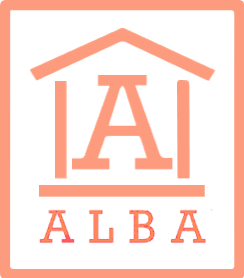What is a ventilated facade: design features and operating principle

This type of cladding is a multilayer frame system. Due to this, high thermal insulation and savings on heating/cooling of air in the building are achieved during operation. To understand how such a system functions, it is necessary to mention in more detail the design features of the ventilated facade:
- The wall of the building. It is considered the base, providing for the fastening of the main components. It can be made of different materials, if necessary, it is subject to alignment.
- Substructure. This is a frame part attached to the wall with anchors and brackets. It is made of aluminum, galvanized steel or stainless steel.
- Insulation of the facade. The heat-insulating layer is created using mineral wool or expanded polystyrene. It is fixed to the wall with dowels or glue. Protection of the walls from moisture and temperature changes is provided by a hydro- or vapor barrier membrane, which is mounted on top of the insulation.
- Ventilation gap. Its presence ensures air circulation. A facade with an air gap prevents the formation of mold and mildew on the walls, providing a favorable microclimate inside the room.
- Facade panels. They are fixed to the frame using visible or hidden fasteners. A wide selection of materials and designs provides for the use of panels made of metal, fiber cement, wood, porcelain stoneware, composite.
A facade with ventilation works according to the following scheme. Air enters the ventilation duct through open gaps at the bottom. Then, due to the temperature difference, it rises up and exits through the upper openings. In this case, the flow removes moisture from the insulation and layers of the structure.
Advantages of ventilated facades: five main points

What qualities of curtain wall facades determine such popularity of finishing? Among the large list of advantages, it is worth highlighting five main ones:
1. Original design
A huge selection of offers of facing material allows you to create different options for combinability. Thus, the installation of a ventilated facade improves the value of real estate and increases commercial attractiveness.
2. Energy efficiency
The facade insulation system provides not only improved heat-saving properties, but also has the ability to maintain the air temperature inside the rooms in the summer. Therefore, living in such houses at any time of the year is comfortable and cozy.
3. Soundproofing
Finishing the building facade using the provided technology provides a high noise absorption rate. This becomes possible due to the reflection of high-frequency sounds from the facade cladding, and low and medium frequencies - from the insulation.
4. Installation at any time of the year
Materials for installing a curtain wall are supplied from the factory in a prepared form. The work itself does not require special adjustment of the elements, which reduces the time and cost of installation. The technology involves quickly covering the insulation with facade cladding, which minimizes the possibility of it getting wet in bad weather.
5. High maintainability
With an excellent durability indicator (service life of 25-50 years) of ventilated facades, they require minimal maintenance efforts. If necessary, users have the option of replacing individual panels in the cladding system. This is done using the technology specified by the manufacturer.
These advantages, as well as other positive properties of the ventilated facade, will be available to users only if all elements are installed correctly. Therefore, if you do not have construction skills, it is best to entrust such work to experienced professionals.
















